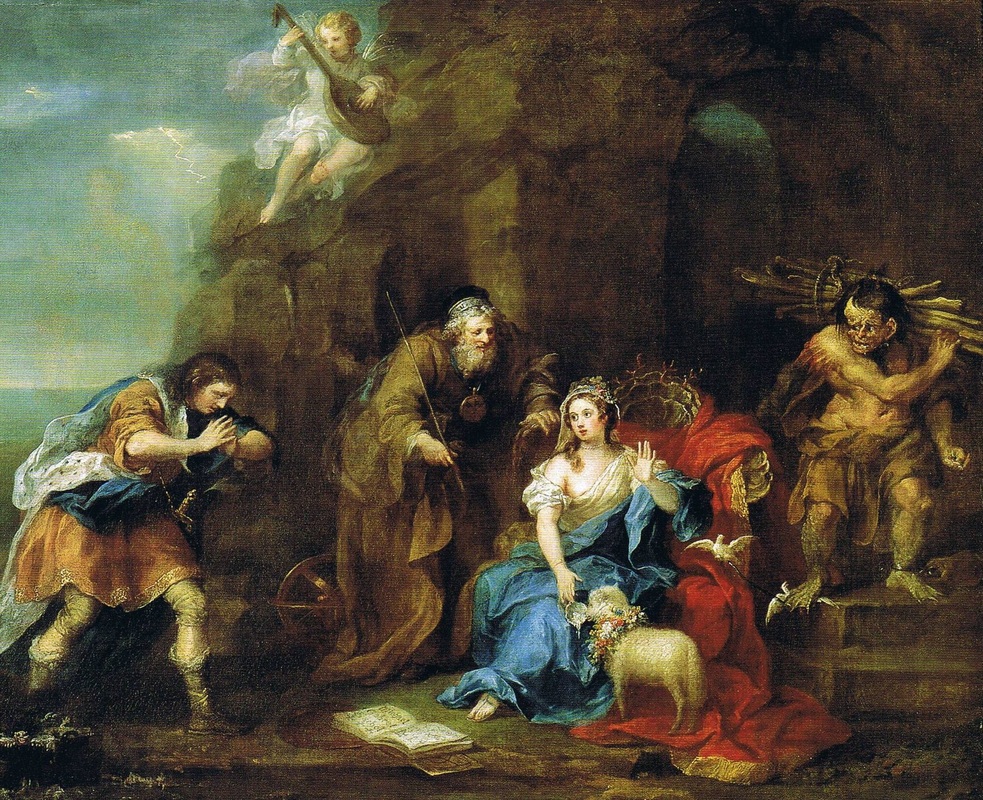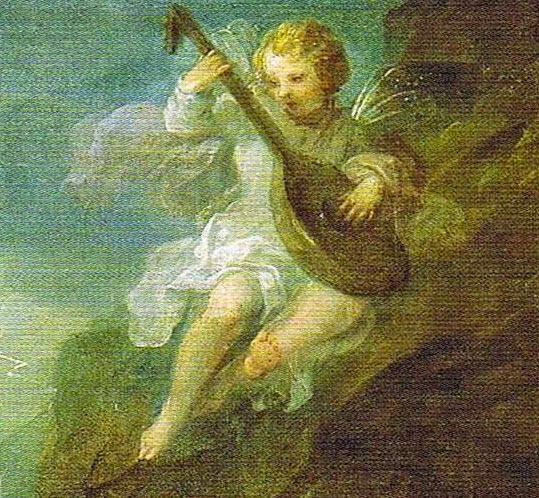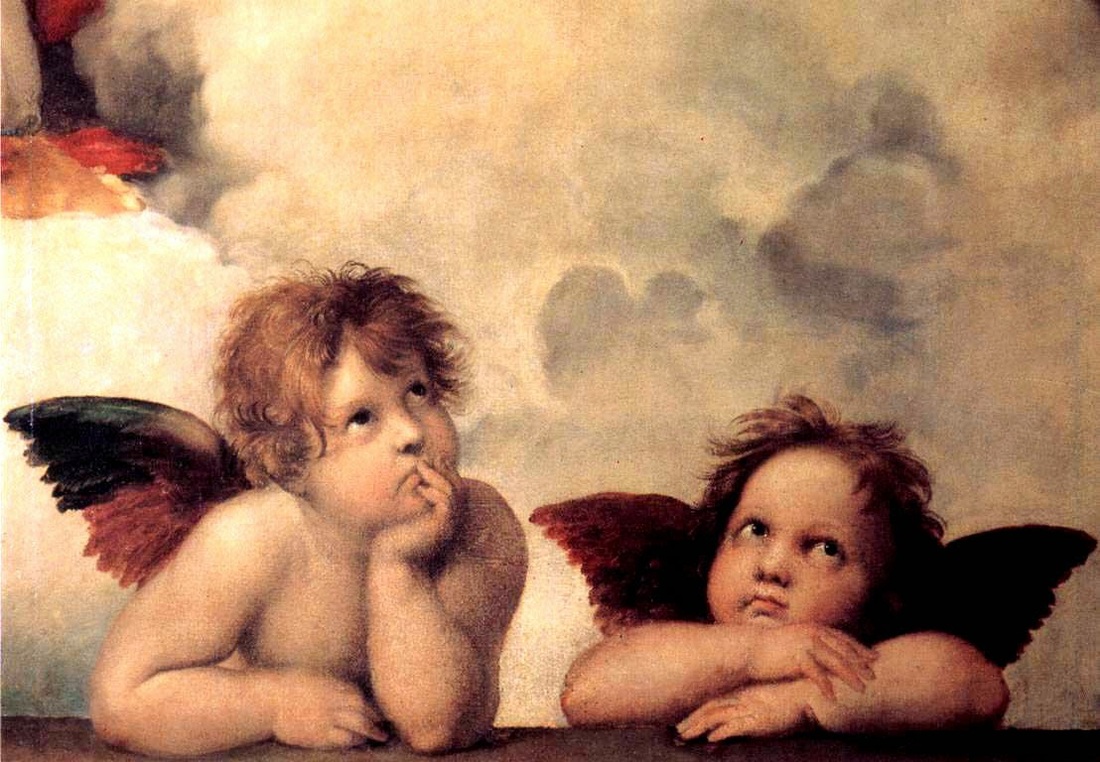|
This is the third post in a series. To start from the beginning, click here. William Hogarth's painting, A Scene from "The Tempest" (c. 1730), depicts the same moment in the play, but focuses attention on lines that happen just after, when Miranda sees Ferdinand for the first time and declares him, “A thing divine” (1.2.422), which not only draws attention to the human drama unfolding but also relies heavily on the religious undertones in the play. In the Hogarth image, Ariel appears like a cherub. Although Ariel’s fairy wings are visible, Hogarth is clearly drawing on religious iconography of childlike angels akin to Raphael’s cherubim in the Sistine Madonna. Ariel is also periphery to the action of Hogarth’s painting. Everyone in the painting looks at Miranda—the miraculous—whereas she looks intently on Ferdinand. The colors she wears and the iconography associated with her, such as a lamb, make her into a strangely Marian figure; the scene, therefore, approximates the Epiphany, which is fitting since Ferdinand is discovering this wonder for the first time. Hogarth’s reading of this scene highlights the religious language of the text, but it downplays a more sinister side to the scene. In Shakespeare’s play, Ariel not only draws Ferdinand toward him with the tempting “sweet air” (1.2.397) but also threatens him with horrifying taunts about his father’s seeming demise: “Full fathom five thy father lies; / Of his bones are coral made; / Those are pearls that were his eyes” (1.2.400-402). In contrast, Hogarth’s Ariel appears wholly unthreatening as a childlike angel, and a lone angel at that (unlike the Dadd painting, wherein we see a bacchanalian community of spirits). Hogarth thus presents a strangely anesthetized version of the moment in the play, and he renders Ariel into a nonthreatening character. His religious interpretation suppresses the subversive pagan dance that Dadd suggests.
0 Comments
Leave a Reply. |
Claire Dawkins
English Instructor at Stanford's Online High School Archives
August 2015
Categories
All
|



 RSS Feed
RSS Feed